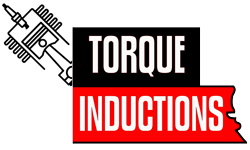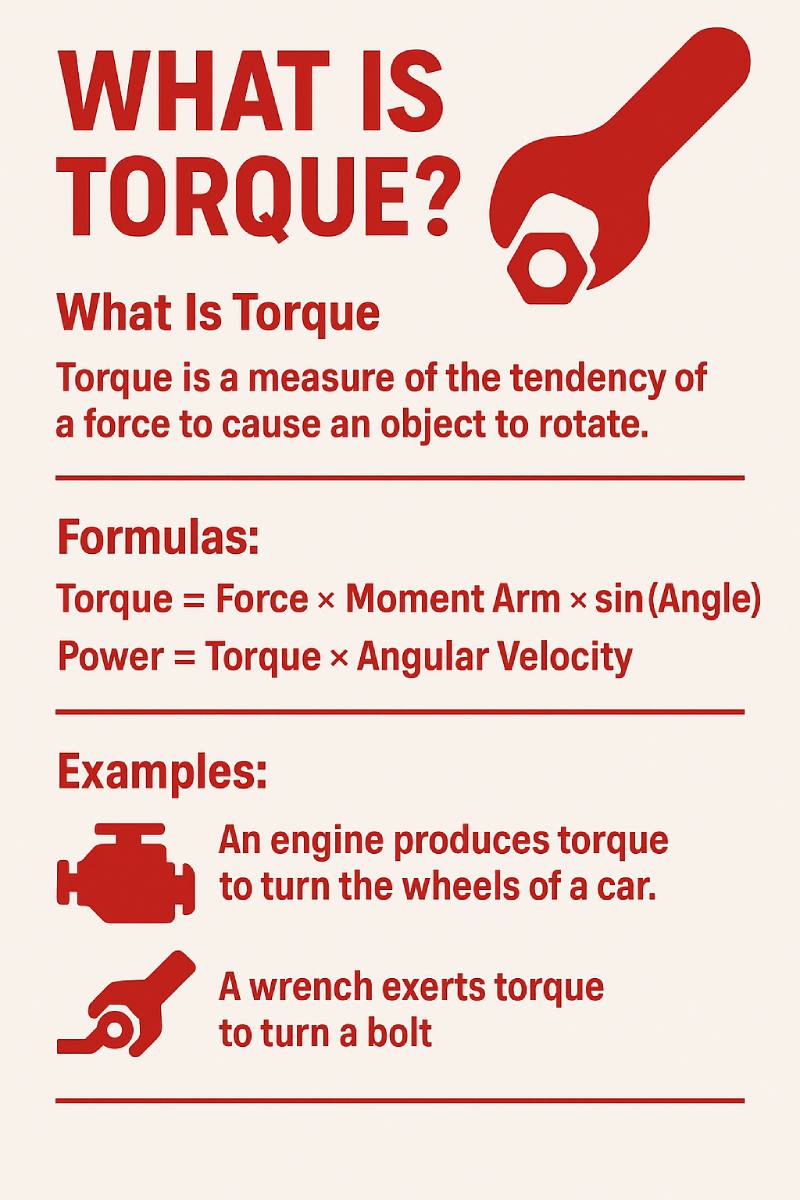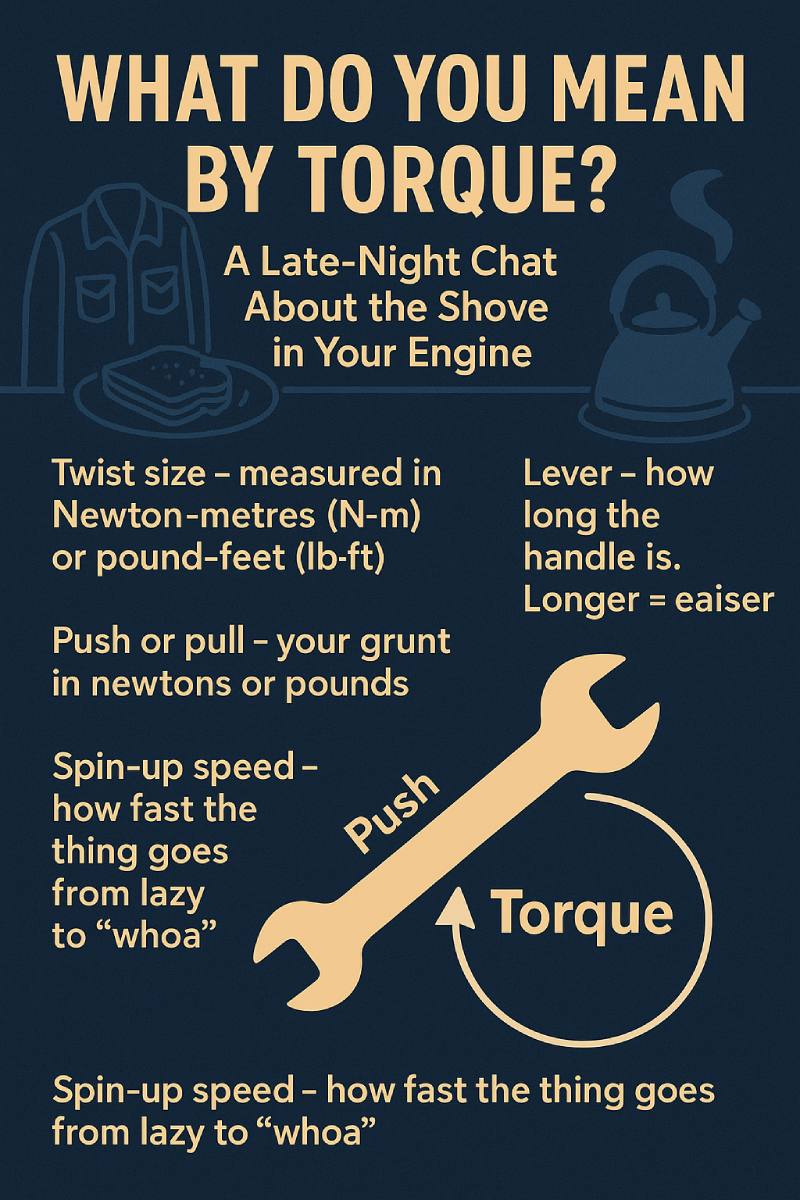- Posted on
- • Performance
What Is Torque? Simple Explanation with Real-Life Examples
- Author
-
-

- User
- Torque
- Posts by this author
- Posts by this author
-

What Do You Mean by Torque? A Late-Night Chat About the Shove in Your Engine
The kettle hissed; the kitchen smelled like burnt toast and two-stroke oil from the jacket draped over my chair. One text from my cousin—“what do you mean by torque?”—and here we are, 11:42 p.m., thumb hovering over the voice-note button like it might explode.
Reality Check: Torque Isn’t a Superpower (Even If It Feels Like One)
Car sites love to yell “500 lb-ft of earth-twisting torque!” like Zeus just handed you the keys to Olympus. Truth is, most of us still stall at green lights and spill coffee on the center console. Torque is simply the grunt that turns your wheels before horsepower even clocks in for the shift. Think of it as the first yank on a stuck drawer—once it moves, everything else is just momentum wearing nicer shoes.
Practical Gems: Tiny Lessons I Paid For in Skinny Jeans and Skinny Wallet
1. Feel It in the Bus Lane
I once jumped an ancient city bus by mistake—well, the bike did. Traffic was crawling, I cracked the throttle on my air-cooled Bonneville, and the bike lurched forward like it had spotted an open bakery. That shoulder-press sensation? Pure torque. No speed yet, just a promise.
2. The Grocery-Bag Test
Ever lugged six bags of milk and oranges up three flights? The first step off the landing is murder; after that, stairs get easier. Engine torque is that first murder-step. Horsepower is how fast you reach the landing, Instagramming along the way.
3. Smell the Clutch, Learn the Lesson
First time I rode a Ducati Monster, I roasted the clutch trying to wheelie. Smelled like a campfire of regrets. Torque had shown up, but I asked for too much, too soon. Respect the shove; don’t bully it.
4. The Thumbtack Analogy
Push a thumbtack into cork with your thumb—that steady pressure is torque. Whacking it with a hammer is horsepower. Both get the job done, but one feels sneaky, the other messy.
5. Diesel Pickup in the Drive-Thru
Ever been behind a lifted Ram at midnight? You feel the idle rumble in your ribcage before you see it. That low-rpm tremor is torque flexing at 1,200 rpm, proving you don’t need revs to strut.
6. Torque Curve > Torque Number
Specs sheets brag peak figures, but the curve tells bedtime stories. My buddy’s 90-cc dirt bike makes 7 lb-ft, yet it’s all there at 3,000 rpm. Translation: wheelies in flip-flops. Don’t judge the party by the invitation; check the playlist.
7. The Overpass Merge
I once merged onto I-95 in the rain on a 250-cc single. The cars behind me were glued to my bumper, itching to honk. I eased the gas at four-grand, the engine gave a quick yank, and we glided into the open lane—no beeps, just wet road and a shot of pure buzz.
8. Coffee Grinder Epiphany
Hand-grinding beans at 6 a.m., the crank is easy at first, then fights you mid-stroke, then sails smooth again. Engines feel the same: lumpy idle, meaty midrange, airy top end. That mid-stroke fight? Peak torque saying hello.
9. Electric Scooter Sneak Attack
Rode a rental e-scooter last week. Zero noise, instant torque, nearly catapulted into a hedge. Electric motors hand you 100 % of their twist the second you breathe on the throttle—proof that torque doesn’t need drama to be dramatic.
10. The Junk-Drawer Spark Plug
Found an old spark plug, electrode worn like a tired smile. Remembered the 350-cc twin it came from—bike would grunt away from lights, then wheeze past 60. Torque showed up early, horsepower overslept. Sometimes the party ends before the song changes.
Whispers, Not Megaphones
So when someone asks, “what do you mean by torque?” you can whisper back: it’s the low-down twist in an automotive engine, the shoulder-check shove in a motorcycle, the difference between rolling and rocketing. Variations like “engine torque explained,” “motorcycle torque vs horsepower,” or “how torque works in cars” all point to the same late-night truth—grunt before glam.
Send-off—Back to the Kettle
The toast is cold now, and the kitchen clock just clicked midnight. My cousin’s probably asleep, dreaming of turbo diesels or maybe just turbo lattes. Either way, the message is sent: torque is the friend who shoves you onto the dance floor before you find the beat. Next time you crack the throttle—bike, car, or rogue e-scooter—feel that first nudge in your chest and smile, because you finally know exactly what it means.
Look, torque is just “twist.” That’s it. You feel it every time you crank a jar lid, yank a wrench, or gun a car off the line. Here’s the whole story without the textbook fluff.
What we’re talking about
- Twist size – measured in Newton-metres (N·m) or pound-feet (lb·ft).
- Lever – how long the handle is. Longer = easier.
- Push or pull – your grunt in newtons or pounds.
- Spin-up speed – how fast the thing goes from lazy to “whoa.”
- Stubbornness factor – heavy flywheels hate to start spinning; bike wheels don’t care.
- Work rate – horsepower or watts: how quickly the twist gets stuff done.
The quick math you’ll actually remember
- Torque = push × handle length.
50 newtons on a 20 cm spanner? 10 N·m. - Torque = stubbornness × spin-up rate.
- Horsepower = (twist × rpm) ÷ 5,252.
200 N·m at 4,000 rpm ≈ 113 hp. - Work done = twist × how far you turned it (in radians).
Real stuff
- Diesel pickup truck: 450 N·m at 1,800 rpm – perfect for towing a boat or a heavy load.
- On road Sports car: 300 N·m at 5,500 rpm – really it feels like a kick in the back.
- Electric motor: 900 N·m at 0 rpm – traffic-light hero.
- Crane: thousands of N·m, barely crawling.
- Home drill: 5-10 N·m, spins like crazy.
Next time you tighten a lug nut—say 30 newtons on a 30 cm wrench—you’re putting down 9 N·m. That’s all torque is: the twist that keeps the world spinning.

Torque Formulas
Basic Torque
Torque = Force × Moment Arm × sin(Angle)
τ = F · r · sin(θ)
Units: N·m, F in N, r in m, θ in degrees/radians.
Torque and Rotation
Torque = Moment of Inertia × Angular Acceleration
τ = I · α
Units: I in kg·m², α in rad/s².
Power from Torque
Power = Torque × Angular Velocity
P = τ · ω
Units: P in Watts, ω in rad/s.
For horsepower: P (hp) = (Torque (lb·ft) × RPM) / 5252
Work by Torque
Work = Torque × Angular Displacement
W = τ · θ
Units: W in Joules, θ in radians.
